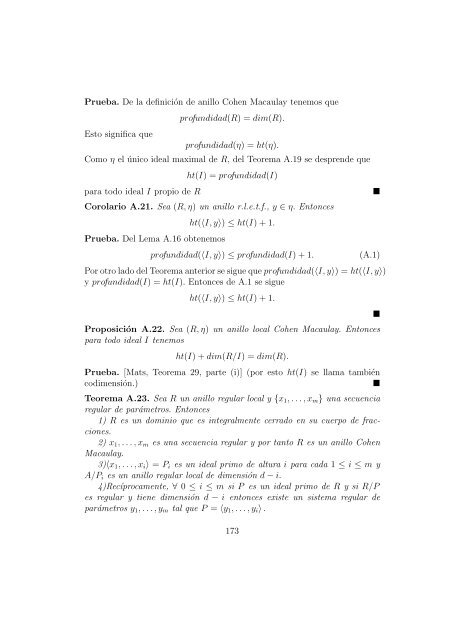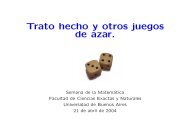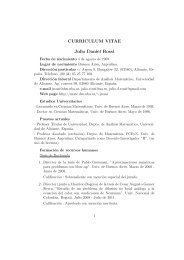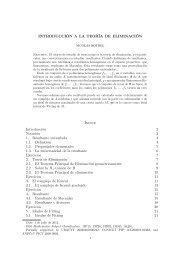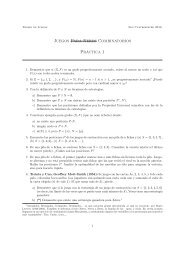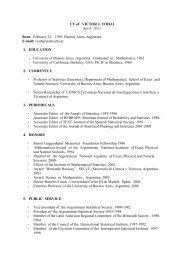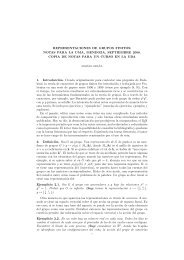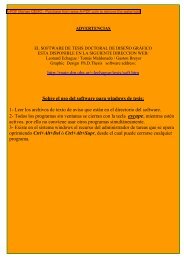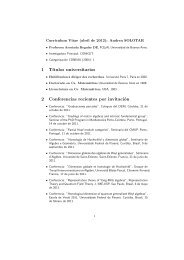You also want an ePaper? Increase the reach of your titles
YUMPU automatically turns print PDFs into web optimized ePapers that Google loves.
Prueba. De la definición de anillo Cohen Macaulay tenemos que<br />
Esto significa que<br />
profundidad(R) = dim(R).<br />
profundidad(η) = ht(η).<br />
Como η el único ideal maximal de R, del Teorema A.19 se desprende que<br />
ht(I) = profundidad(I)<br />
para todo ideal I propio de R <br />
Corolario A.21. Sea (R, η) un anillo r.l.e.t.f., y ∈ η. Entonces<br />
Prueba. Del Lema A.16 obtenemos<br />
ht(〈I, y〉) ≤ ht(I) + 1.<br />
profundidad(〈I, y〉) ≤ profundidad(I) + 1. (A.1)<br />
Por otro lado del Teorema anterior se sigue que profundidad(〈I, y〉) = ht(〈I, y〉)<br />
y profundidad(I) = ht(I). Entonces de A.1 se sigue<br />
ht(〈I, y〉) ≤ ht(I) + 1.<br />
Proposición A.22. Sea (R, η) un anillo local Cohen Macaulay. Entonces<br />
para todo ideal I tenemos<br />
ht(I) + dim(R/I) = dim(R).<br />
Prueba. [Mats, Teorema 29, parte (i)] (por esto ht(I) se llama también<br />
codimensión.) <br />
Teorema A.23. Sea R un anillo regular local y {x1, . . . , xm} una secuencia<br />
regular de parámetros. Entonces<br />
1) R es un dominio que es integralmente cerrado en su cuerpo de fracciones.<br />
2) x1, . . . , xm es una secuencia regular y por tanto R es un anillo Cohen<br />
Macaulay.<br />
3)〈x1, . . . , xi〉 = Pi es un ideal primo de altura i para cada 1 ≤ i ≤ m y<br />
A/Pi es un anillo regular local de dimensión d − i.<br />
4)Recíprocamente, ∀ 0 ≤ i ≤ m si P es un ideal primo de R y si R/P<br />
es regular y tiene dimensión d − i entonces existe un sistema regular de<br />
parámetros y1, . . . , ym tal que P = 〈y1, . . . , yi〉 .<br />
173


